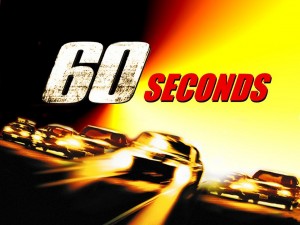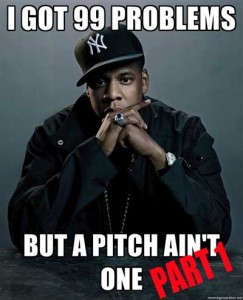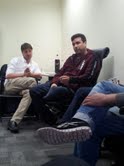It’s almost impossible to predict the future, whether it be the financial or tech future. There is so much great innovation out there, but when will it reach widespread market distribution? As mentioned in a previous blog, the world has been waiting for electric cars for several years and we are still waiting… we are still not ready it seems. BetterPlace failed to distribute their products to the mass market.
At this week’s startup course we discussed these issues and what the future holds for us. We were fortunate to be joined by Benjy Feinberg of the lending site, Zazma, who provided his insights into business and the future of finance. Zazma shares eToro’s vision of opening up the financial markets to the everyday man rather than it being just constrained to the privileged few. Is this concept also too premature or are we just sowing the seeds of a revolution? Time and history will be our judge, but as Winston Churchill stated, ‘history will (hopefully) be kind to us, for we intend to write it.’
Ultimately the larger the cost of your product the slower the pace of distribution. Facebook and Twitter went viral because they were free, whereas eToro requires a cash investment. Robots and Space travel require extortionate product costs and after 5 decades we are still waiting for both to reach a viable sustainable commercial marketplace. Supersonic commercial air flights were scrapped 10 years ago as they were not economically viable, amazingly we have still been travelling at pretty much the same air speed for 20-30 years.
Very successful enterprise startups tend to have iterative sales models. They achieve a 50-100% growth rate year over year for several years. So the strategy should be to get the smallest customer that is also a good reference customer and build from there. Building the business will take time, but under a realistic scope of growth, this also will reassure your investors and build further VC interest over time. Most sales models fail because people miscalculate the sales cycle. They underestimate just how long it takes to land the ideal clients. So get the smallest, best customers you can, quickly. Jump the easy hurdles first. Then you’ll know more about how to deal with the larger enterprise customers.
We are now living in the programmable world. There are all these gadgets available to make our lives easier, ‘soon we’ll be able to choreograph them to respond to our needs.’ The key word here is soon. How soon will these practical gadgets reach us?
We at eToro are disrupting and democratising the world of finance. The next generation will be more exposed to their own investments than they’ve ever been before. Sometimes revolutions take time whether it be political or technological. The Berlin wall fell several years after round-table talks had begun and the internet only really hit our computers almost 20 years after peer to peer servers were being used. We can’t predict the future, but you can’t change the world if you do not try and whether it be tomorrow or in 10 years, your vision if shared by the masses will at some point reach it’s target audience…






